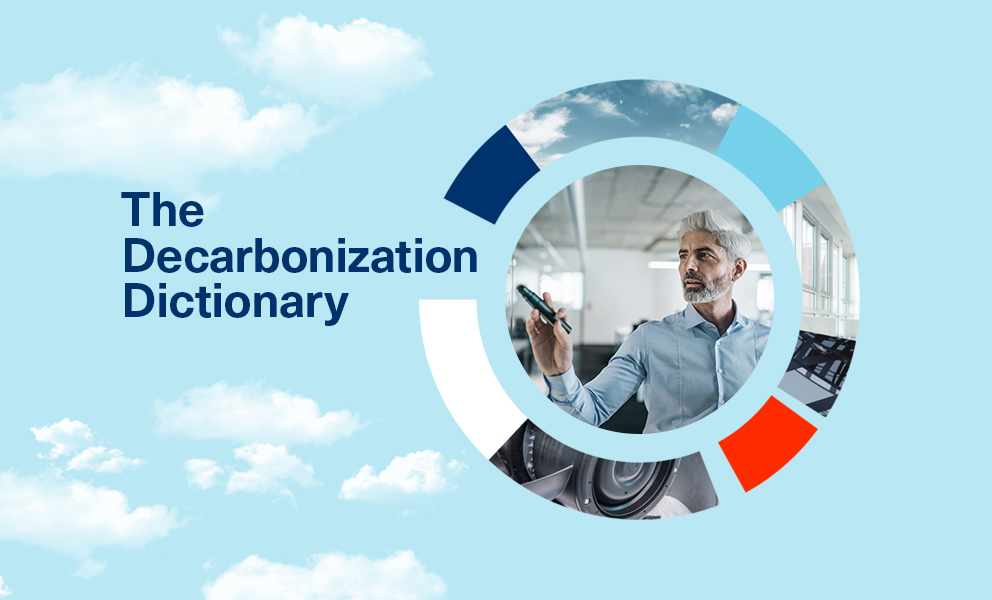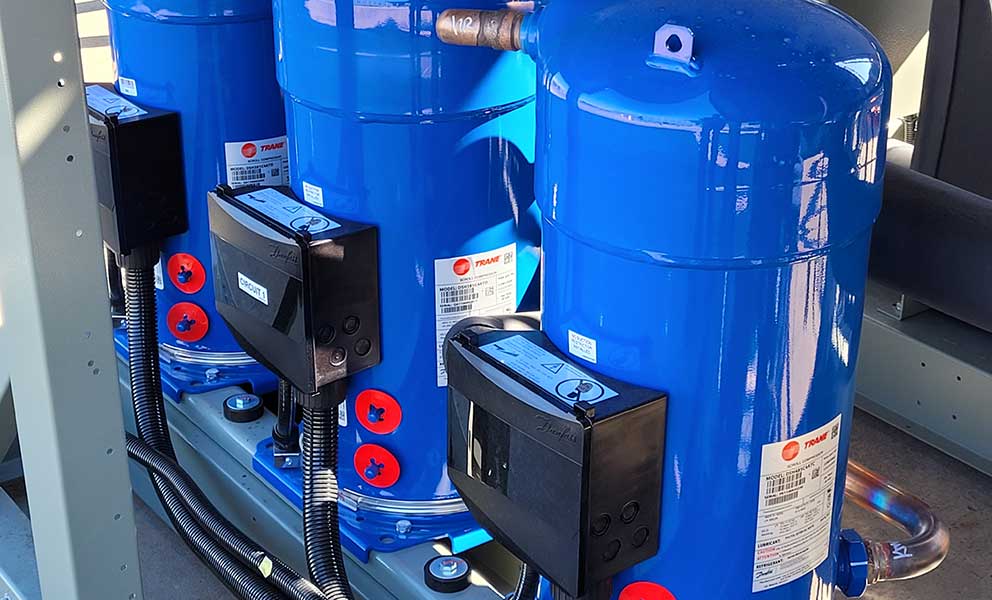ESG, decarbonization, and net zero - what do all these terms mean? Once reserved for boardroom strategy meetings, this terminology is now prevalent in everyday discussions across companies as decarbonization becomes a critical part of launching and achieving sustainability goals.
However, with so many similar-sounding terms and acronyms being used interchangeably, it can be complicated to understand each of their meanings and how they relate to one another. Energy planning requires a clear understanding of these terms and the way they connect with one another.
This table outlines some commonly used terms around the topic of decarbonization. Knowledge and understanding of these keywords can help your team communicate more clearly and effectively about your energy journey.
- Carbon Dioxide (CO2) is the most common GHG and enters the atmosphere through burning fossil fuels (coal, natural gas, and oil), solid waste, trees, and other biological materials, and because of certain chemical reactions.1
- Carbon Dioxide Equivalent (CO2e) is the main unit for reporting emissions and indicates the warming effect of any GHG in terms of CO2.
- Connected Terms: CO2; GHG
- Carbon Footprint is the total measurement of greenhouse gases (including carbon dioxide and methane) produced by the actions of a person, company, or organization.
- Carbon Neutral is when GHG released into the atmosphere is equal to GHG removed from the atmosphere.
- Connected Terms CO2; GHG; Net Zero
- Chlorofluorocarbons (CFCs) are nontoxic, nonflammable chemicals containing atoms of carbon, chlorine, and fluorine. They are used in the manufacture of aerosol sprays, as blowing agents for foams and packing materials, as solvents, and as refrigerants.2 Some CFCs are potent greenhouse gases with high GWP.
- Connected Terms: CO2; GHG; GWP
- Decarbonization is any process that removes carbon dioxide or other GHGs from the atmosphere or prevents them from being emitted. Read more about Decarbonization.
- Direct Emissions are related to onsite fossil fuel use to power or heat/cool buildings, or leakage of GHGs such as refrigerant.
- Electrification is the process of switching building energy sources from onsite fossil fuels to electric sources.
- Connected Term: Decarbonization
- Embodied Carbon is how much greenhouse gas is emitted during the manufacture, transportation, installation, maintenance, and recycling/scrapping of a piece of equipment.
- Connected Terms: Scope 3; contrast to operational carbon
- Energy Efficiency is reducing the amount of energy it takes to power a process or piece of equipment, while maintaining the same output.
- Connected Term: Decarbonization
- Environmental, social, and governance (ESG) is a foundational framework for companies to create sustainability strategies and goals around these three pillars.
- Connected Terms: Sustainability
- Global Warming Potential (GWP) is the degree to which a gas traps heat in the atmosphere, indexed relative to CO2, which has a GWP of 1.
- Green House Gases (GHG) are gases that trap heat in the atmosphere. These include carbon dioxide (CO2), methane (CH4), CFCs, and H2O.
- Connected Terms: CO2; CFCs
- Indirect Emissions are emissions are related to the production of purchased energy, including electricity.
- Net Zero means consuming only as much energy as is produced, achieving a sustainable balance between water availability and demand, and eliminating solid waste sent to landfills.3
- Connected Terms: Carbon Neutral; Zero Emissions
- Operational Carbon are the greenhouse gases released due to the general energy consumption of a building, process, or piece of equipment.
- Connected Terms: Scope 1; Scope 2; contrast to embodied carbon
- Refrigeration Management is transitioning to low GWP refrigerants in HVAC equipment and adhering to proper maintenance to minimize leaks.
- Connected Term: Decarbonization
- Renewables are solar, wind and other types of energy from sources that are natural and constantly replenished.
- Connected Term: Decarbonization
- Sustainability is the ability to maintain or improve standards of living without damaging or depleting natural resources for present and future generations.4
- Zero Emissions means no emissions are released during the production of energy.
- Connected Terms: Net Zero; Carbon Neutral
It’s evident that decarbonization is a complex topic and understanding the terminology is critical as we work to determine efficient and sustainable energy solutions. Each journey requires careful planning and expert guidance. However, with the right information and collaborator, you can successfully transition to a low-carbon future and have a more sustainable energy system.
Trane is here to help you navigate this journey and find the solutions that best fit your unique needs. Connect with our energy experts and by leveraging our experience in the industry, you can take the first step towards a more sustainable future.




































































































